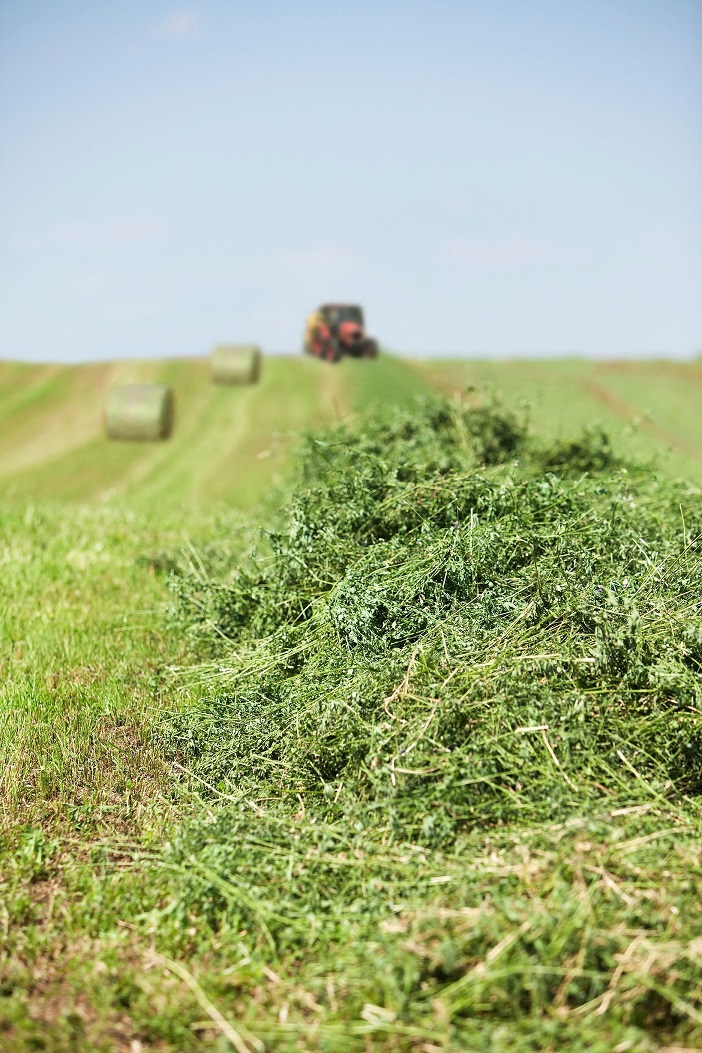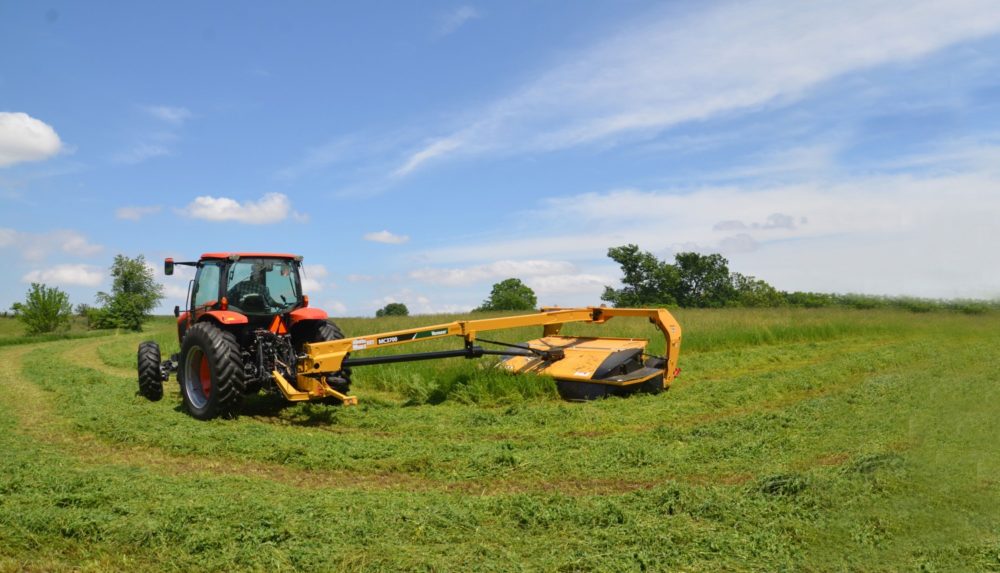
Reduced-Lignin Alfalfa Provides Balance
June 2015
Producers may no longer have to choose between forage quality and yield.
To some extent, hay production has always been a balancing act, as producers have had to weigh the trade-off between increased tonnage and decreased quality as alfalfa plants mature beyond a certain stage — generally late bud stage for dairy or 10 percent bloom for beef. However, alfalfa growers may have a new tool to bring both factors into equilibrium. Known as reduced-lignin alfalfa, the unique crop has the potential to benefit growers in two different ways.
First, it’s important to understand the role of lignin and how it affects alfalfa yield and quality. According to Dr. Dan Undersander, University of Wisconsin Extension Forage Agronomist, lignin is a complex organic compound that binds cellulose fibers and hardens and strengthens the cell walls of the plant. As the plant matures, lignin increases to provide structural support as the plants grow taller. Unfortunately, as lignin increases, forage quality and nutritional value decrease.
“Lignin also allows the plant’s vascular system to transport water in the plant without leakage,” Undersander adds. “However, lignin is indigestible and reduces fiber digestibility in ruminants. Thus, reducing lignin content should increase fiber digestibility at any maturity stage.”
Undersander’s team began testing transgenic alfalfa lines for two lignin biosynthetic genes as early as 2008, and replicated trials have been conducted in Minnesota, Wisconsin and California. They found that it is possible to harvest higher quality with either of the transgenic reduced-lignin alfalfa lines when harvesting occurs on a similar schedule as for non-transgenic lines. On the other hand, reduced-lignin lines harvested eight to 10 days later than the commercial variety had the same forage quality and higher-yield.
Such harvest flexibility may not be that far off, either. Forage Genetics International (FGI) has been developing a gene modified reduced-lignin trait for alfalfa and recently received USDA approval for the transgenic trait developed in a partnership with government, industry and private non-profit groups. Currently tagged HarvXtra, the GMO trait has shown a 15 to 20 percent decrease in lignin and a 10 to 15 percent increase in relative forage quality and neutral detergent fiber compared to other commercial crops.
In the meantime, Alforex Seeds, based in Woodland, Calif. Recently announced two low-lignin varieties that were developed using conventional plant breeding. Trademarked as High-Gest varieties, one is a dormant variety, while the other is a semi-dormant species. Both varieties maintain yield and stand persistence in addition to the benefit of seven to 10 percent lower lignin levels compared to conventional varieties.
Pioneer has also developed a new reduced-lignin alfalfa variety that promises a lignin reduction of around five percent. It’s expected that one or more of the Alforex and Pioneer varieties will be available in limited quantities next year and that the FGI trait may also be released in 2015.
Consequently, those who harvest on a specific schedule — such as every 28 days — may choose to use a reduced-lignin variety to maintain the current schedule and reap even higher quality. Or, they can extend the harvest date by several days to attain more yield while harvesting the same quality as conventional varieties harvest on the normal timeline.
“During our research, we found that if we held off harvesting reduced-lignin alfalfa until a 10 percent bloom, we saw an average of 20 percent increase in yield,” Undersander notes.
As an added benefit, reduced-lignin alfalfa adds the flexibility a producer often needs when the weatherman forecasts rain. In essence, one can delay harvest a day or two without affecting quality or risking moisture damage.
“When alfalfa begins to regrow after being cut, the growth per acre is low,” Undersander explains. “But as the crop matures the growth per day increases. Thus, in alfalfa harvest systems where we took three versus four cuttings within the same time period, alfalfa yield was 20 to 25 percent greater — with the labor of one less cutting — for the three-cut system.”

“What we’re trying to learn now is,” Undersander concludes, “does the percentage of lignin reduction — whether it’s between varieties or between GMO and non-GMO lines — directly relate to the number of days we can delay harvest without affecting quantity.”
